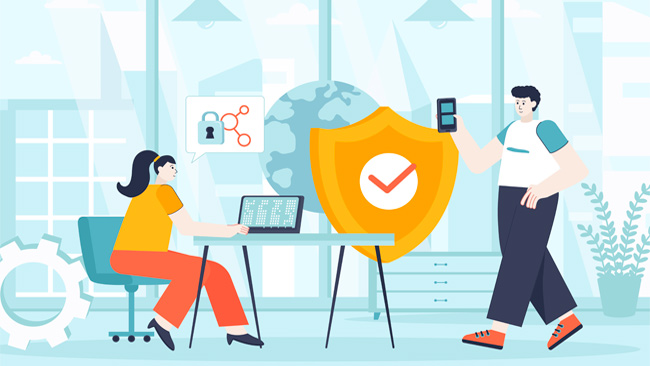In 2021, American businesses alone experienced 4,472 preventable work deaths, a 9% increase compared to the previous year. In the same year, 23% of workers experience violence or harassment while on the job, not to mention that businesses are also exposed to several property crimes.
Employers must make the workplace as safe and comfortable as possible. This means protection from the risks of physical accidents, violence, thefts, fires, and other undesirable events.
In this article, we will list five steps employers should take to ensure their workers can operate in a safe and healthy environment.
#1 Regularly Clean and Sanitize Your Workplace
Like most crowded spots, offices, factories, and other workspaces expose your employees to the risk of bacteria, viruses, and other pathogens. That’s why it’s important to clean and sanitize your workplace regularly.
This involves various tasks, including:
- cleaning all surfaces with disinfectant;
- vacuuming carpets;
- washing windows and glass surfaces
- safely storing waste;
- removing dust from hard-to-reach spots.
In order to ensure your office is properly cleaned, you should always hire skilled cleaning personnel.
Asking your employees to regularly wash their hands and training them on the right technique is also important to prevent germs from spreading.
#2 Make Sure Your Workers Are Properly Trained
When onboarding new employees, it’s critical to ensure they are properly trained on safety protocols, especially when hired to perform manual work.
Effective training helps your employee understand what risks are associated with their activity and how to behave in the event of an emergency.
Regarding manual work, safety training can be the deciding factor in containing the number of accidents and deaths on the job.
Some common safety skills your workers should learn include:
- how to wear protective gear effectively;
- how to identify unsafe scenarios and report them;
- how to use manual and powered tools correctly;
- how to recognize symptoms of fatigue, overheating, or dehydration;
- how to handle hazardous materials.
Even office employees and other workers that are not involved in manual tasks should learn certain basic safety protocols, such as how to behave in case of a fire alarm, how to move safely in a crowded workplace, and how to recognize cybersecurity threats.
In addition to initial training, workers should also take part in refresher courses and be made aware of any new safety protocols.
#3 Implement a Modern Access Control Solution
Access control measures aim to ensure that only authorized personnel can access the premises or specific areas.
By doing so, you will reduce the risk of events such as robbery, vandalism, theft, and unauthorized access to confidential information.
Key card locks are a common type of access control solution. They are designed to allow only those possessing a specific keycard to enter the premises, while others can’t. An alternative to these devices is using systems that allow employees to access the premises using digital credentials installed on their mobile devices.
When protecting particularly sensitive areas, such as server rooms, it may be wise to implement more sophisticated access control solutions. For example, you may install facial recognition devices. These solutions work by scanning employees’ faces as they enter or exit an area and grant access only if their identity is verified. For extra security, you can also consider multi-factor authentication (MFA), which requires staff to enter two or more credentials before accessing the area.
#4 Use Analytics to Boost Your Video Security System
Commercial video surveillance is essential to make your workplace safer. It has a double purpose: working as a deterrent against criminals and other people interested in accessing the area and collecting evidence of crimes when they happen.
Video cameras should be installed in all strategic indoor and outdoor areas for maximum effectiveness.
One of the most recent advancements in the field of video security is the use of analytics software for prevention. This technology works by analyzing very large volumes of footage in order to detect irregular patterns that may be a symptom of suspicious activities.
For example, when an unrecognized individual is loitering on the premises or when a vehicle is parked in an area that doesn’t usually have vehicles, analytics software can detect it and send an alert to security staff that can act fast and prevents any damage or crime.




Leave a comment
Have something to say about this article? Add your comment and start the discussion.